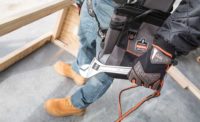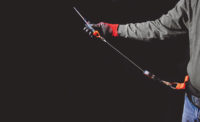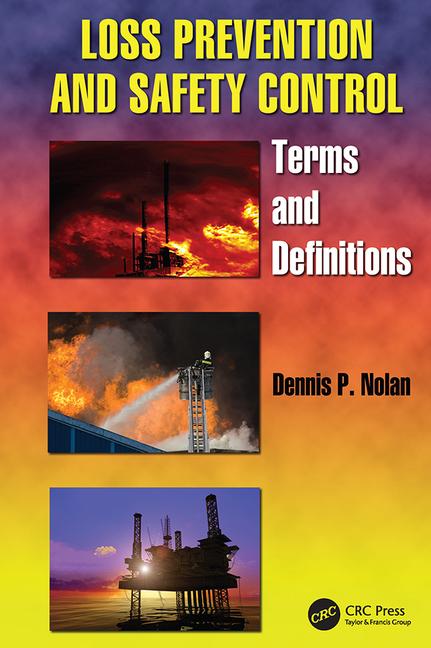Historically, dropped objects have played a principal role in oil and gas incidents. This situation should not be tolerated or allowed to continue. We must eliminate this type of incident.
Dropped objects is a collective issue and not just an operator or a rig owner’s problem; it is a common problem for everyone in our industry.
It occurs in most areas of the oil and gas industry, including fixed installations, mobile drilling units and land rigs and in all areas of our supply chain, including the office.
The solution is not an individual one, but a common solution, one that can be practiced by everyone who is involved in our industry.
Chevron values the safety of all workers and the protection of the environment.
Chevron is committed to Incident-Free Operations (IFO), but this can be achieved only by working as a team with our contractors.
Chevron wishes to acknowledge the valued contribution made by its contractors and the Dropped Objects Prevention Scheme (DROPS) in the production of this book.
One Team, One Goal, Incident-Free Operations (IFO)
Two Key Principles
- Do it safely or not at all.
- There is always time to do it right.
We will ALWAYS:
- Operate within design and environmental limits.
- Operate in a safe and controlled condition.
- Ensure safety devices are in place and functioning.
- Follow safe work practices and procedures.
- Meet or exceed customer’s requirements.
- Maintain integrity of dedicated systems.
- Comply with all applicable rules and regulations.
- Address abnormal conditions.
- Follow written procedures for high risk or unusual situations.
- Involve the right people in decisions that affect procedures and equipment.
Stop Work Authority (SWA) is the responsibility and authority of any individual to stop work when an unsafe condition or act could result in an undesirable event. By failing to exercise SWA when needed, your behavior sends the message that the practice is acceptable.
The DROPS booklet describes the management of objects that could fall and harm people or damage property during operations performed on all facilities under Chevron operational control. Specific reference is made to the Chevron Global Dropped Objects Management Guidelines (Issue 2010) and cross-industry Dropped Objects Prevention Scheme.
http://www.dropsworkpack.com/downloads_tools.htm
The objective of this booklet is simple guidance to eliminate dropped objects through:
- Identification and understanding of potential workplace dropped objects hazards
- Creation of a dropped objects work group
- Understanding the various levels of protection that are available to prevent dropped objects
- Selecting and supplying the right level of mitigation
- Raising the overall awareness of dropped objects
The contents of this booklet apply to all Chevron personnel, contractors and subcontractors working on sites under Chevron operational control.
A dropped object is:
“Any object, with the potential to cause death, injury or equipment/environmental damage, that falls from its previous static position under its own weight.”
When referring to dropped objects, consider:
- Hand tools being used at heights
- Hand tools/equipment left behind after working at height
- Operations conducted at height
- Equipment mounted at a height that, following contact, vibration or environmental conditions, could fall, i.e., piping, lights, cameras, rigging gear, etc.
- Temporary equipment at height
- Where personnel are working on a level directly below the work site
- Lifting operations
Dropped objects are regularly the principal causes of incidents in the oil and gas industry and contribute to the total risk level for offshore and onshore facilities.
The consequences of a falling object include:
- Personal injury/death
- Structural damage
- Damage to equipment
- Release of hydrocarbons/fire
Strategy
- Create site-specific dropped objects work groups.
- Identify and assess problem areas.
- Develop and implement an action plan.
- Monitor results.
- Continually improve.
Risk areas
- Rig derricks/drill floor
- Areas below lifting operations
- Cranes
- Elevated work areas or platforms
- Work spaces where equipment is mounted overhead
- Temporary/portable equipment
- Remotely operated vehicles (ROVs)
- Vessels/barges
- Pipe racks
- Forklift trucks
- Poor stacking of materials
- Ladders
- Scaffolding
What causes dropped objects?
- Poor housekeeping
- Scrap and debris left aloft
- No inspection
- No equipment maintenance
- Poor designs
- Weather
- No restraints
- No planning
- Load miscalculation
- Lack of risk assessment
- Errors in space requirements
- Instability
- Ineffective control of equipment or tools taken aloft
- No lanyards on tools used at height
- Improperly secured or inappropriate loads
- No regular inspection procedures
- Becoming blind to changes in activity (dynamic risk assessment)
- Carrying equipment while at height
Recommended actions
- Create a dropped objects work group specific to the site.
- Complete a derrick or work site dropped objects inventory with the Chevron HAZARD ID tool.
- Use the inventory to develop an inspection program.
- Introduce working at height procedures.
- Introduce specific toolkits for working at height. Implement processes to account for tools.
- Raise overall dropped objects identification and mitigation among the workforce.
- Train relevant personnel to identify and mitigate dropped objects processes.
- Secure tools from dropping to lower levels.
- Following Job Safety Environment Assessment (JSEA) guidelines, erect signage and physical barriers to restrict access before work is conducted overhead.
- All rigging risk assessments require consideration of the risks involved in moving equipment at height.
- Review and revise JSEAs for dropped objects potential.
- Introduce regular dropped objects campaigns.
- Schedule regular Hazard Hunts.
- Review handling and securing procedures for tubular components.
- Introduce area ownership, and hold personnel accountable.
- Add secondary retention, and consider safety systems, such as safety nets.
- Inspect personal protective equipment (PPE), for example, safety harness, lanyard and chin straps.
- Inspect all overhead equipment and locations for loose items that may present a hazard during maintenance activities.
How Can I Personally Prevent Dropped Objects?
- Actively support the dropped objects work group.
- Take responsibility for my actions.
- Look after my colleagues.
- Maintain good housekeeping.
- Stop unsafe activities by using my SWA.
- Make observations and report incidents.
- Review and follow procedures.
- Recognize known hazards, and follow the controls in place.
- Consider dropped objects in all Toolbox Talks.
- Consider dropped objects in all JSEAs.
- Check areas after all work is completed, even if it is permit-controlled.
- Participate in Hazard Hunts.
- Investigate all incidents, including near misses.
- Secure all tools and equipment when working at height.





